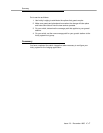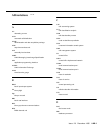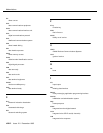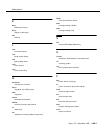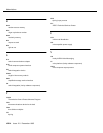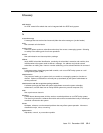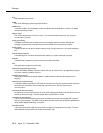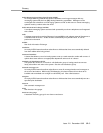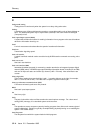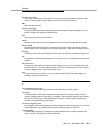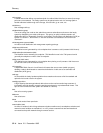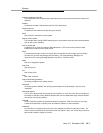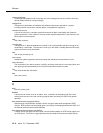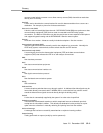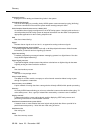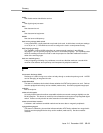
Glossary
GL-4 Issue 2.0 December 1995
B
background testing
Testing that runs continuously when the system is not busy doing other tasks.
backup
A duplicate copy of files and directories saved on a removable media such as floppy diskette or
tape. The backup filesystem may be copied back (restored) if the active version is damaged
(corrupted) or lost.
basic input/output system (BIOS)
A system that contains the buffers for sending information from a program to the actual hardware
device the information should go to.
baud
A unit of measurement that describes the speed of transferred information.
baud rate
Transmission signaling speed.
basic call transfer
A switch hook-flash method used to send the Intuity AUDIX transfer command over analog voice
ports.
basic rate access
See
basic rate interface
.
basic rate interface (BRI)
International standard protocol for connecting a station terminal to an integrated systems digital
network (ISDN) switch. ISDN BRI supports two 64 Kbps information bearer channels (B1 and B2),
and one 16 Kbps call status and control (D) channel (a 2B + D format). Also called b
asic rate
access
.
binary digit (bit)
Two-number notation that uses the digits 0 and 1. Low-order bits are on the right (for example,
0001=1, 0010=2, and so forth). Four bits make a nybble; eight bits make a byte.
binary synchronous communications (BSC)
A character-oriented synchronous link protocol.
BIOS
See
basic input/output system
.
bit
See
binary digit
.
body
The part of subscriber voice mail that contains the actual spoken message. For a leave word
calling (LWC) message, it is a standard system announcement.
boot
The operation to start a computer system by loading programs from disk to main memory (part of
system initialization). Booting is typically accomplished by physically turning on or restarting the
system. Also called
reboot
.
boot filesystem
The filesystem from which the system loads its initial programs.



